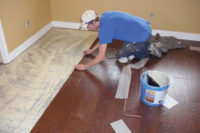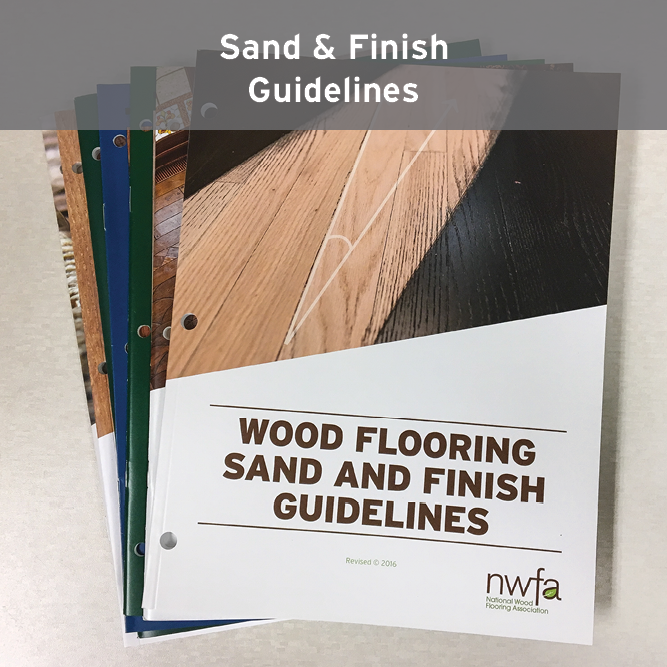What Makes Bamboo the Right Choice for Your Customer?






Bamboo is very much like wood, but it is not a wood specie. It is a tree-like grass that grows extremely fast, one of the fastest growing plants in the world.
Bamboo was made into flooring many years ago, but it only first came on the U.S. market some 20 or so years ago. At that time it was initially available in a nominal 12” x 12” fingerblock parquet style. It had quite a different appearance than your typical, time-tested oak hardwood flooring. From a marketing standpoint it was initially advertised as a harder material than wood, good for the environment and imported from China.
Easy sell? Yeah, right. At the time it was introduced here, wood flooring buyers were gung-ho for the “linear look,” the 2-1/4” strip flooring that was king. Prefinished hardwood flooring was certainly making great strides, and distributors were reluctant to take on an unproven Chinese bamboo import.
But take a moment if you will and draw a comparison between bamboo flooring and say, Korean automobiles – Hyundai, anyone? – you would see they traveled a similar path. After rough starts out of the gate, both have become consumer friendly, with features and benefits on par with their competitors and marketing that is tuned in to the preferences of today’s informed and perceptive buyer.
Today, bamboo flooring has found a noteworthy niche in the marketplace. Marketers have positioned it as an environmentally friendly product made from rapid growth, natural regenerating tree-like grass. Bamboo sprouts readily from the cut stems, so regenerating new stands is easy and natural.
There are many species of bamboo that grow around the world. Most have the potential for rapid growth. In fact, some shoots have been observed to grow over three feet in a single day. Typically, stands of bamboo establish relatively fast such that harvest can take place in about 10 years or less. This is quite a contrast to the slow growth of the red and white oak trees so abundant in the U.S.
Parts of bamboo shoots are very hard, which makes their tissues suitable for the surface of flooring products (not just food for panda bears). When it comes to performance bamboo is often compared to some of the hardest hardwoods, but it depends on the type of flooring, the species, and quality of the manufacturing.
According to several manufacturers, hardness is the main factor in durability. How hard is bamboo? It can be as soft as pine or harder than maple, depending on the species used and when it was harvested. For durable-wearing bamboo used in flooring, it’s hard to do better than Moso bamboo harvested at maturity (around 5-1/2 to 6 years) when the fiber density is at its peak. This will result in bamboo flooring being produced that tests on average 25 percent harder than red oak and 12 percent harder than maple. But not all bamboo is alike: very low-end priced bamboo flooring made from immature or earlier harvested material can yield a less-durable wear surface.
When doing research for your product selection, you’d do well to look for Moso bamboo. The most valuable bamboo in Asia, it is one of the most highly used plants for commercial purposes. Moso bamboo’s strength, flexibility, and ready availability have made it a dominant structural material throughout much of the world for centuries.
Bamboo flooring comes in two types: strandand vertical. Most industry experts concur that the strand variety is much stronger than traditional bamboo flooring. On the Janka Hardness Scale, a good quality bamboo in either the horizontal or vertical cut tests out around 1,450 psi. Stranded bamboo is compressed and bonded with resins that make it test out over 3,000 psi. That makes the stranded bamboo flooring ideal for high traffic light commercial applications such as retail stores, restaurants, and other similar uses.
Traditional wood flooring, the elder statesman of flooring, has nothing to prove. Bamboo, on the other hand, has had to work its way into being accepted as a high-profile product in home building and is still relatively new to U.S. builders and consumers. It is beautiful, versatile and, as discussed, very durable in its own right. But what has contributed most to bamboo’s acceptance and accomplishments as a “green” and desirable flooring product is twofold. First is its reputation for rapid growth and natural regeneration properties; second, the variety of competitive and attractive styles that manufacturers have offered up to the market place.
More recently, bamboo flooring has become popular for its unique looks. Manufacturers now offer a broad range of flooring choices with a multitude of stained options and textures including the currently popular hand-scraped style that looks more like wood. Bamboo flooring is available in both engineered and solid flooring. It is mostly made in five thicknesses ranging from 5/16” up to 5/8” in 1/8” increments.
Depending on whether it is solid or engineered, bamboo flooring can be installed as a nail down, glue down or floating floor. Manufacturers also offer a complementary selection of trim and transitions to finish out the installation.
So when it’s time to make that important hard-surface flooring selection decision, at the end of the day it usually comes down to the subjectivity of the consumer’s particular preference. Those who are really environmentally conscious gravitate to the green aspects of bamboo flooring. Others choose it simply because it can perform as good as or better than traditional wood flooring, while offering the buyer an alternative product with a different unique look. Suffice it to say, bamboo flooring has come a long way in the U.S. building market, and doesn’t look to be slowing its pace anytime soon.
Looking for a reprint of this article?
From high-res PDFs to custom plaques, order your copy today!









